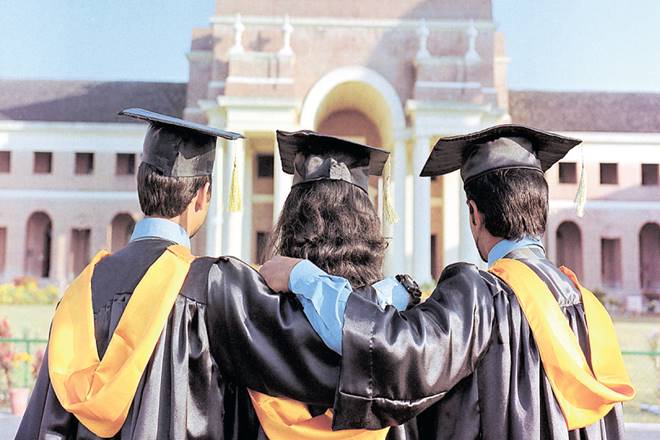Prof G Raghuram
Budget 2019 India: There were no surprises, pleasant or otherwise, in this year’s Union Budget for the education sector. The Budget does refer to the New Education Policy, which is very well-thought-out, even though its various recommendations still need to be fully debated. The key focus areas required in India are (1) better quality in school education, (2) increasing the gross enrolment ratio, (3) skilling for employment, and (4) improving the research focus in higher educational institutions. I will limit my comments on (3) and (4) above.
While talking about skilling, the Budget explicitly focuses on new-age skills such as artificial intelligence, Internet of things, big data, 3D printing, robotics and virtual reality. There is also a focus on enabling our youth to be able to work globally to leverage our ‘demographic dividend’. This is welcome. However, even traditional skills such as commercial vehicle driving, logistics services, beauty and wellness, agro-processing, retail, etc, need attention. It is interesting to note that, for 2018-19, the ministry of skill development and entrepreneurship (MSDE) sought a budget of nearly Rs 7,700 crore, but were allocated Rs 3,400 crore citing prior period underutilisation.
However, the revised estimate for 2018-19 is closer to Rs 2,800 crore, reflecting the bandwidth of the MSDE to spend. For 2019-20, nearly Rs 3,000 crore has been allocated.
A key initiative the MSDE is undertaking based on its policy is to develop capacity by inducting qualified and trained fellows at district level to “spread awareness about skill development, identify the local needs of the region and steer the skill development efforts.” It’ll help in strengthening of institutions towards identifying skill gaps and enabling skill acquisition. This is being done under Project Sankalp (Skills Acquisition and Knowledge Awareness for Livelihood Promotion). We hope this initiative will provide much-required nudge towards skill development. But there could be challenges related to (1) the bandwidth that key decision-makers at the district level (district magistrate/collector) and state level (relevant ministry secretaries) have, and (2) the availability of trainers for skill development.
Moving on to higher education, the focus on research is clearly an issue. High quality institutions have been focusing on this over the past decade, primarily driven by global rankings. They have managed to create a research ecosystem and move up the ladder. IISc, IITs and IIMs are examples. Financing of research is a critical issue. The government is the primary financier for IISc and IITs. More recently, alumni and philanthropic foundations have been contributing to cutting-edge areas of research. The older IIMs have demonstrated that they can generate their research funds through surpluses from tuition and executive education fees. However, even if they have to break further into cutting-edge work, alumni and CSR funding would be essential.
In all this, the funding from the government and industry sources needs to go up significantly. In this context, the government has proposed creating a National Research Foundation (NRF). The objective is to strengthen the research ecosystem in the country. The primary vehicle for this would be integrating the funds available with all ministries, which are currently allocated independent of each other. There would also be additionality of funds. While the idea of integration is good, it is important to ensure that additional bureaucracy does not set in. For example, ministries like the Railways which are more like an ‘industry’ may have a better idea of the research problems, the funding requirements, the capability of institutions and the monitoring requirements rather than an NRF. The idea of NRF would be useful for more fundamental research and its other goals of mentoring and catalysing research in universities and colleges.
Of course, overall research funding needs to go up, both by beneficiary ministries and industry. It is important that ministries and industries develop in-house capability for research. Such a structure would be essential to interact and coordinate with higher educational institutions since line and field functionaries would not have the bandwidth.
There are other initiatives like world-class institutions, five of which have been selected. Two years ago, the ministry of human resource development announced that 10 institutions would be selected with a funding of up to Rs 1,000 crore each. For 2019-20, a total of Rs 400 crore has been allocated to get this started. Of course, one measure of being world-class would be to attract foreign students to study in India. IITs and IIMs, though aspirational on this front and a good bet for attracting foreign students, currently have a record that is nearly ‘nil’. It is interesting that many second-level institutions in cities like Bengaluru, Pune and Delhi do attract foreign students, primarily through liberal scholarships from Indian government. These are taken up by students from friendly and neighbouring emerging economies.
Although the vision of the Budget for our educational system is in the right direction, we clearly have a long way to go to address the needs.
The author is director, IIM Bangalore


